The Tevoda is built to a cruciform plan and linked to an entrance hall, similar to the Hindu temples built in India, particularly in Odisha. The temple has four gopuras or towers on the four cardinal signs with an entrance from the east though a raised bridge.
The long hall, which links the gopuras and central chamber of the temple, has very elegant flower decorations. The temple consists of a central tower with an attached mandapa, which is achieved through an antarala chamber of small size, and with two libraries on its southern and northern sides.
It is enclosed by a compound wall which has four gopuras or towers. To its east, there is a raised causeway that leads to the Siem Reap River. Many of the sculptures depict Vishnu and are in a fairly good condition. However, the main deity of the temple is Shiva.
Some of the sculptures are also of Buddha but disfigured totally. With time the ceiling has collapsed and led to further deterioration. The defaced Buddhas, which are deified in a lotus posture, flanked by devotees, are in a mandapa behind a pediment from the entrance door which leads to the antarala.
The incomplete eastern Gopura I, which is oriented in the western direction, has a roof which is part of the second "pediment of the lateral southern extension" which is not fully restored. The main figure here is of Buddha in a cross legged posture seated on a high platform flanked by disfigured carvings which are interpreted as that of Garuda and the king of Nagas.
The top pediment of this Gopura I with figure of Buddha has an umbrella cover of a Bodhi tree. Carvings depicting episodes from the life of Buddha are seen on the northern door of the eastern Gopura I.
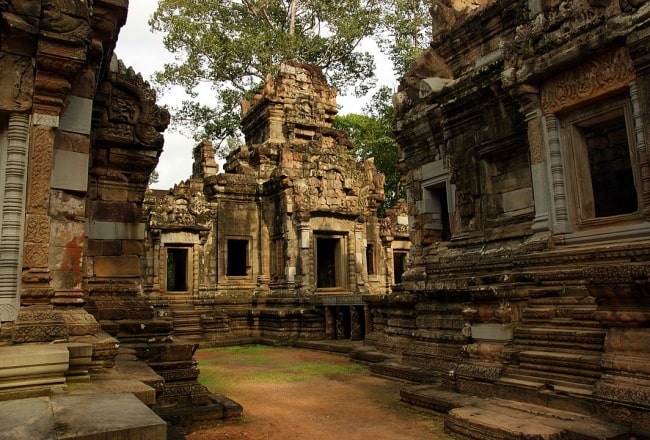
A notable bass relief here is of Sita (heroine of the epic Ramayana) in a seated posture over an altar flanked by rakshasis (female demonesses). Hanuman, in a small monkey form, is carved in sitting posture facing Sita and offering her Rama's ring. A wall built with laterite stones enclosing the temple, which had existed in the past, has disappeared.
The temple was in a dilapidated state with 4,000 of its elements lying scattered on the embankment and in the Siem Reap River. Between 2000 and 2009 some of these elements were put together under a restoration project initiated by the People's Republic of China. The temple reopened in late 2009 and is fully accessible.
Entry Tower
The entry towers are mostly demolished except for traces of the bases and stair ways with sculpted steps. A raised causeway on three rows of octagonal supports (later than the monument) and a terrace link the east entry tower to a nearby river to the east.
Pediments
At the south of the passage a scene depicts the combat of Sugriva and Vali, at the north of the passage (East Side) the reliefs include monkeys, Shiva, and Parvati on a bull, and apsaras.
Central Sanctuary
A long room with a porch precedes the square Central Sanctuary connecting it with the east entry tower by a passage raised on three rows of columns of which only traces remain. This long room is covered with a pattern of flowers inscribed in squares and sculpted with stone flowers such as are seen at Banteay Srei and Baphuon.
The three false doors of the Central Sanctuary are decorated with foliage and columns with diamond-shaped patterns (lozenges) and flowers (on the left); human figures accentuate some of the bands of foliage in the columns.
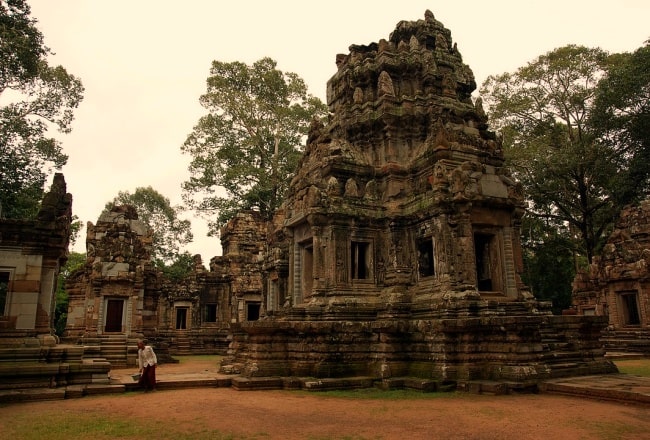
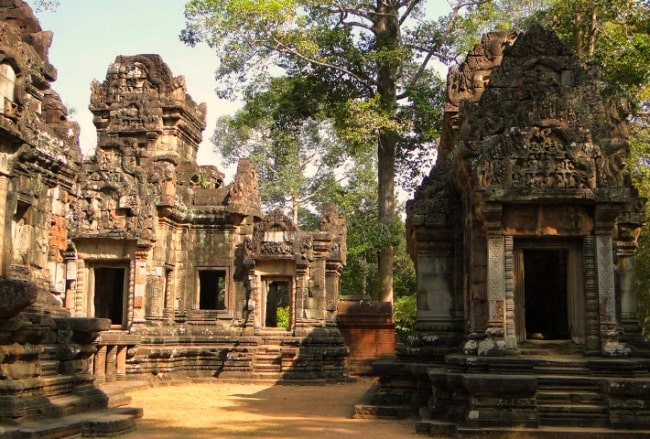




 21/01/2026
21/01/2026


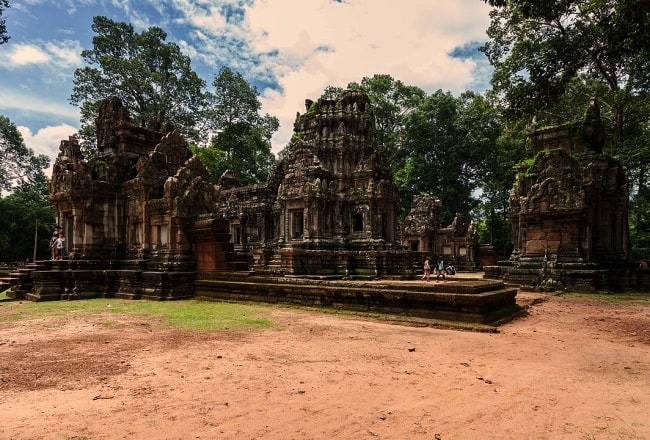

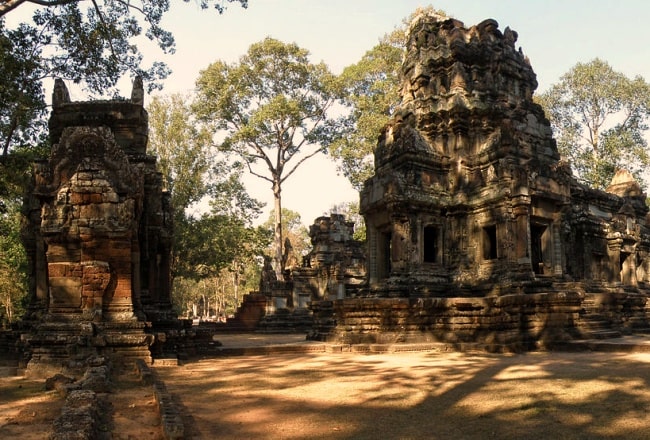
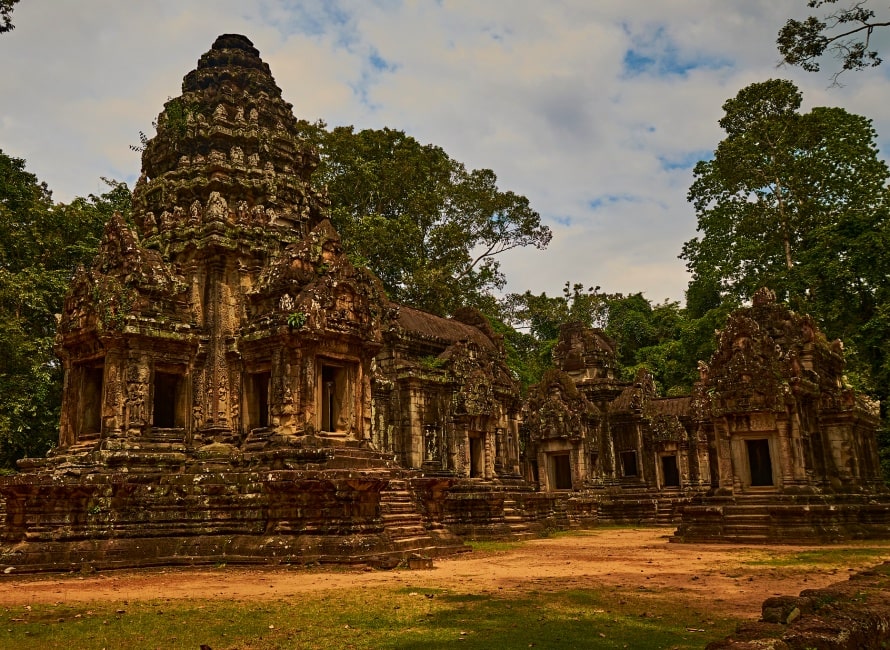
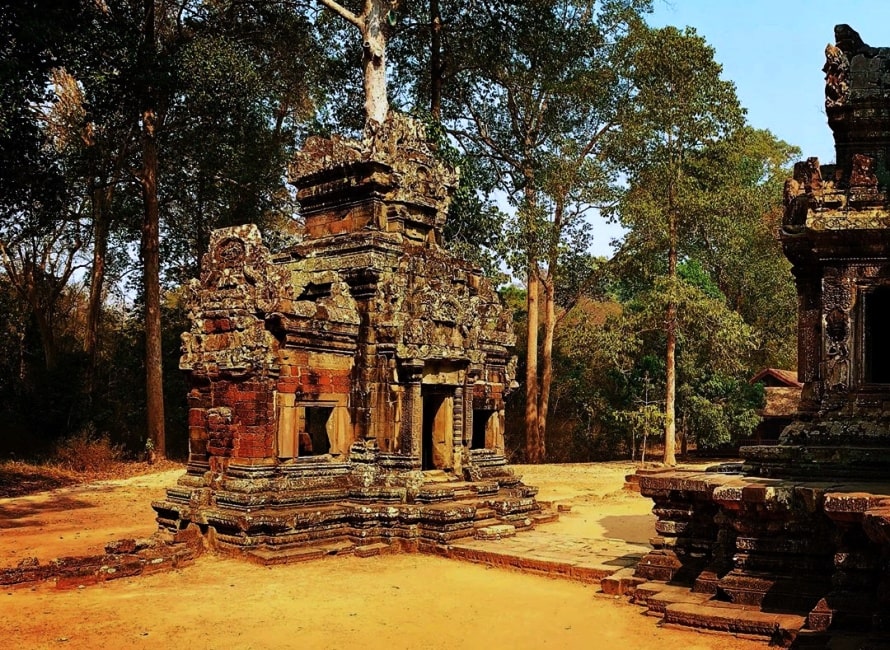
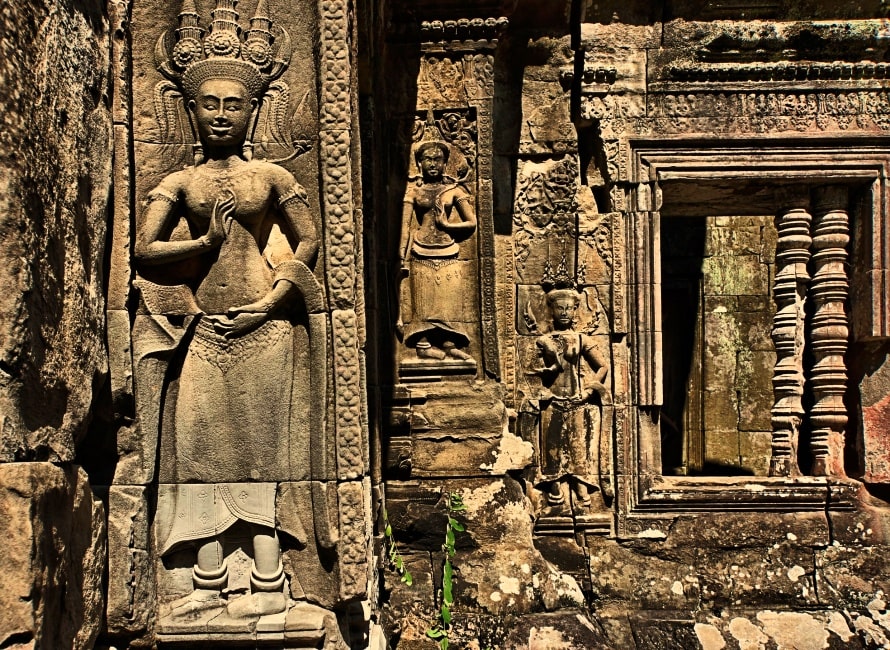
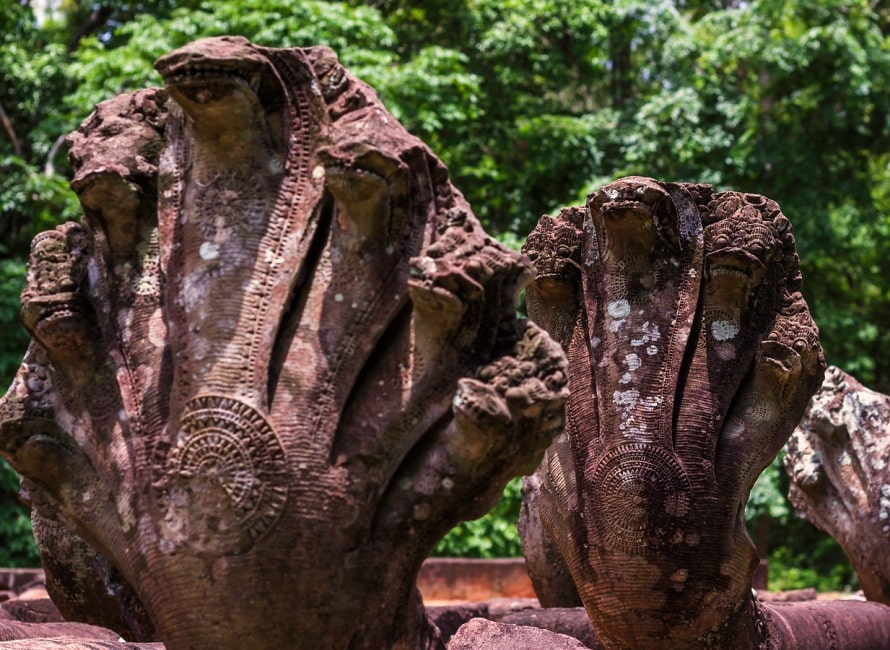


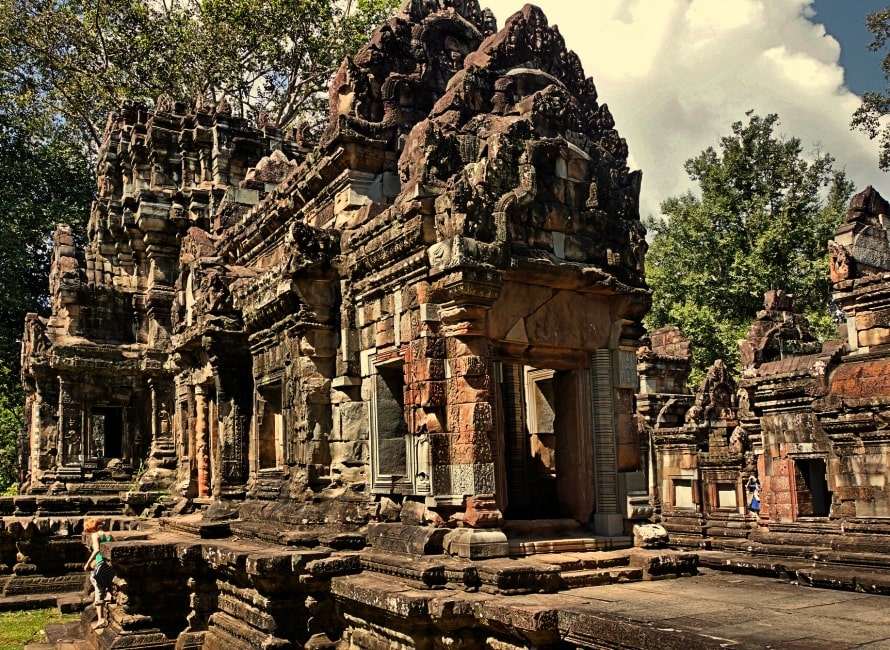
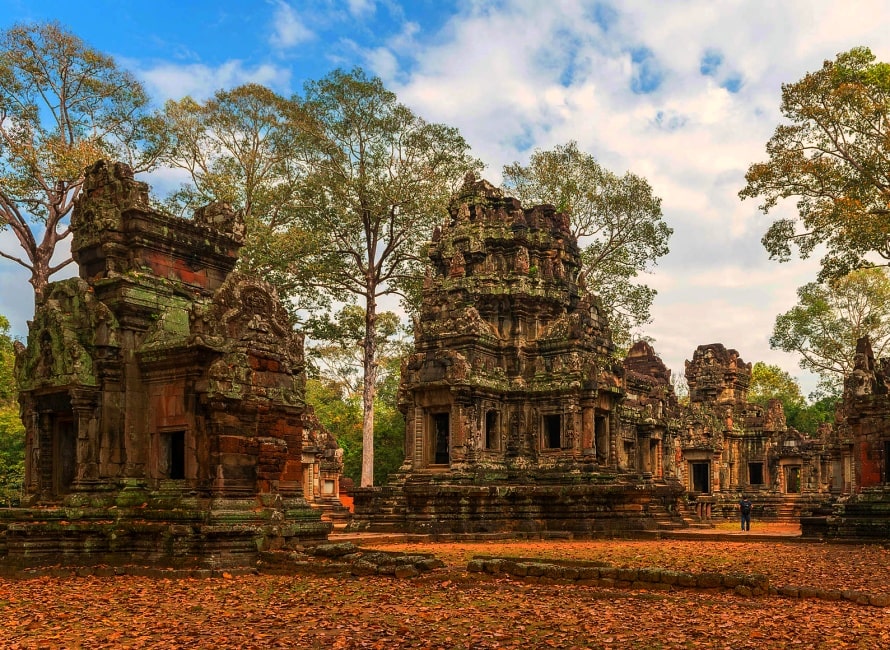
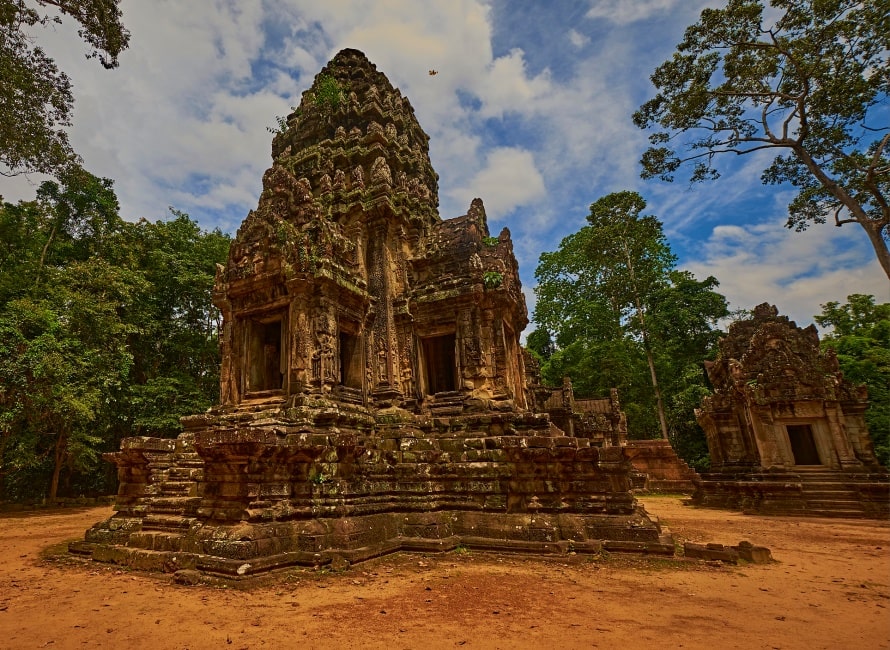




















Jolie LIEMMy name is Jolie, I am a Vietnamese girl growing up in the countryside of Hai Duong, northern Vietnam. Since a little girl, I was always dreaming of exploring the far-away lands, the unseen beauty spots of the world. My dream has been growing bigger and bigger day after day, and I do not miss a chance to make it real. After graduating from the univesity of language in Hanoi, I started the exploration with a travel agency and learning more about travel, especially responsible travel. I love experiencing the different cultures of the different lands and sharing my dream with the whole world. Hope that you love it too!